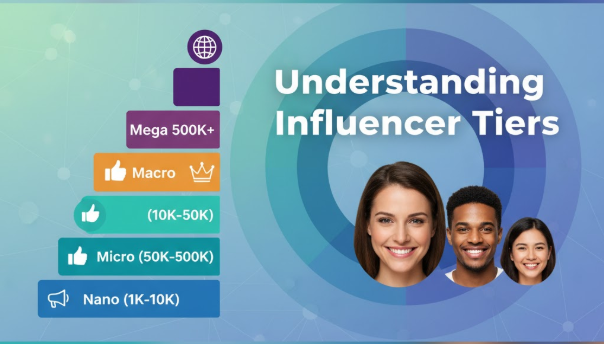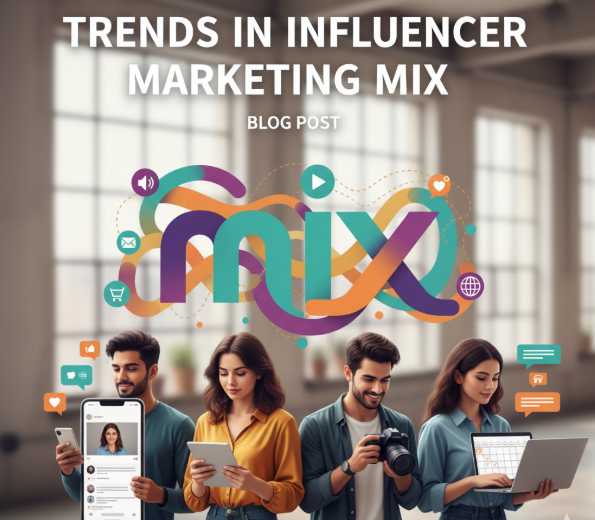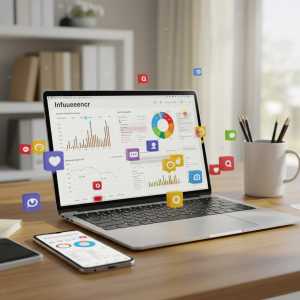Mastering the Influencer Marketing Mix: Leveraging Macro, Micro & Nano Influencers for Explosive Growth

In today’s hyper-connected social media ecosystem, a one-size-fits-all influencer approach no longer cuts it. Brands need a multi-tier strategy that blends the massive reach of macro influencers with the intimate engagement of micro and nano influencers to achieve both scale and authenticity. This guide delves into why combining these tiers is crucial, how to allocate resources effectively, and detailed best practices for each influencer category. By mastering the influencer marketing mix, you’ll unlock unmatched brand visibility, foster genuine audience connections, and drive conversions that align with your business goals.
Understanding Influencer Tiers

Macro Influencers (100K to 1M+ Followers)
Macro influencers are seasoned content creators with large fan bases across one or more platforms. Their polished visuals, professional collaborations, and extensive reach make them ideal for brand awareness campaigns. They often command premium fees, but their endorsement can skyrocket product visibility overnight. Typical content formats include sponsored Instagram posts, YouTube reviews, and keynote appearances at virtual or live events. Learn more about The Rise of Virtual Influencers.
Micro Influencers (10K to 100K Followers)
Micro influencers maintain close-knit communities around niche interests like vegan beauty, indie gaming, or sustainable fashion. These creators produce high-quality, authentic content and boast engagement rates up to 4–8%, significantly higher than their macro counterparts. Partnering with micro influencers can boost audience trust and drive meaningful interactions, such as detailed product tutorials, Q&A sessions, and targeted giveaway campaigns.
Nano Influencers (1K to 10K Followers)
Nano influencers might be everyday enthusiasts or hyperlocal figures with limited but passionately engaged followers. Their strength lies in authenticity. Brands can leverage nano influencers for grassroots campaigns—think local coffee shop openings, community-driven product trials, or employee advocacy initiatives. Nano partnerships are cost-effective, often involving free products or modest honorariums, yet they yield high conversion rates through personal recommendations.
Benefits of a Multi-Tier Strategy
Integrating multiple influencer tiers delivers a spectrum of advantages that single-tier campaigns can’t match:
- Scalable Brand Awareness: Macro influencers place your brand on the global map, ensuring immediate exposure across diverse audience segments.
- Targeted Engagement: Micro influencers connect with niche communities, generating authentic conversations around specific product features or use cases.
- Cost Efficiency: Nano influencers require minimal investment—often limited to free samples or small stipends—making them perfect for sustained, low-cost campaigns.
- Enhanced Credibility: Cross-tier endorsements create a ripple effect, reinforcing your brand message through multiple trusted voices.
- Data-Driven Optimization: Access to varied performance metrics across tiers enables granular analysis and continuous campaign refinement.
Step-by-Step Guide to Crafting Your Influencer Mix
1. Define Clear, Multi-Faceted Objectives
Establish primary and secondary goals. For instance, you might aim to increase overall brand awareness via macro partnerships, while micro influencers drive newsletter signups, and nano influencers generate product reviews or local event attendance.
2. Conduct In-Depth Influencer Research
Utilize platforms such as Upfluence, Traackr, or CreatorIQ to filter creators by audience demographics, engagement rates, and content style. Complement this with manual audits—review recent posts, gauge community sentiment, and examine past brand collaborations to ensure alignment.
3. Allocate Budgets Strategically
Divide your influencer spend according to campaign phases:
- Launch Phase: Allocate 40–50% to macro influencers for high-impact announcements.
- Engagement Phase: Dedicate 30–35% to micro influencers for interactive content like live streams and tutorials.
- Sustainment Phase: Use 15–25% for nano influencers to maintain consistent buzz through user-generated content and word-of-mouth referrals.
4. Develop Customized Collaboration Briefs
Create tier-specific guidelines that balance brand consistency with creative freedom:
- Macro Brief: Include brand mission, campaign hashtags, key messages, and production quality expectations.
- Micro Brief: Outline content themes (e.g., “Unboxing Experience”), audience call-to-actions, and preferred posting cadence.
- Nano Brief: Encourage spontaneous, story-driven content—such as short testimonials, behind-the-scenes moments, or unfiltered reviews.
5. Leverage Co-Creation and Cross-Promotion
Collaborate with influencers to co-create unique content—like branded filters, challenge videos, or tutorial series—and share it across all social channels and paid media to maximize impact.
6. Coordinate Posting Schedules and Content Calendars
Use project management tools (e.g., Asana, Trello) to synchronize posting dates, track deliverables, and ensure balanced coverage across influencer tiers and platforms.
7. Track, Analyze, and Iterate
Monitor KPIs specific to each tier:
- Macro: Reach, impressions, CPM, and share of voice.
- Micro: Engagement rate, click-through rate (CTR), and referral traffic.
- Nano: Conversion rate, sentiment analysis, and direct user responses.
Use these insights to reallocate resources mid-campaign, adjust messaging, or pivot to high-performing influencers.
Selecting the Right Tools and Platforms
Managing a multi-tier campaign demands robust tooling. Influencer discovery platforms like AspireIQ and Influenex streamline candidate research. For campaign workflow, consider platforms such as Klear or Julius for contract management, content approvals, and payment processing. Integrate social listening tools like Brandwatch or Sprout Social to monitor brand mentions and sentiment across tiers.
Budgeting and Negotiation Tactics
When negotiating with macro influencers, explore bundled packages—multiple posts, stories, and event appearances in exchange for a consolidated fee. With micro and nano influencers, leverage product seeding, affiliate commissions, and performance-based bonuses. Always outline deliverables in clear contracts that specify content usage rights, exclusivity periods, and FTC disclosure requirements.
Legal and Compliance Considerations
Ensure all influencer partnerships comply with advertising regulations. Mandate disclosure of sponsored content using hashtags like #ad or #sponsored. Protect your assets with detailed agreements that address confidentiality, content ownership, and liability clauses. Partnering with an experienced legal team or using standardized influencer marketing contract templates can mitigate risks.
Measuring Success Across Influencer Tiers
A granular measurement framework is critical:
- Macro Metrics: Use brand lift studies, social share of voice, and reach-based KPIs to quantify awareness impact.
- Micro Metrics: Focus on engagement, CTR, and micro-conversions such as email sign-ups or software trials.
- Nano Metrics: Track coupon redemptions, direct messages, and local event attendance to gauge grassroots influence.
- Holistic ROI Calculation: Aggregate spend vs. attributable revenue, factoring in lifetime customer value (LTV) driven by influencer cohorts.
Future Outlook: Trends in Influencer Marketing Mix

As AI-generated content, virtual influencers, and live commerce gain traction, brands will further diversify their influencer portfolios. Hybrid collaborations, such as pairing macro influencers with AI-generated avatars or co-hosting live shopping events featuring micro and nano voices, can deliver fresh engagement formats. Investing in predictive analytics will enable more precise tier selection and budget allocation, ensuring your influencer marketing mix stays ahead of the curve.
Conclusion
Building a multi-tier influencer marketing strategy is both an art and a science. By leveraging macro influencers for broad visibility, micro influencers for targeted engagement, and nano influencers for authentic advocacy, brands can maximize ROI, foster lasting relationships with audiences, and remain agile in a dynamic digital environment. Adopt the framework outlined above, continuously refine your approach, and watch your brand thrive across every social touchpoint.





